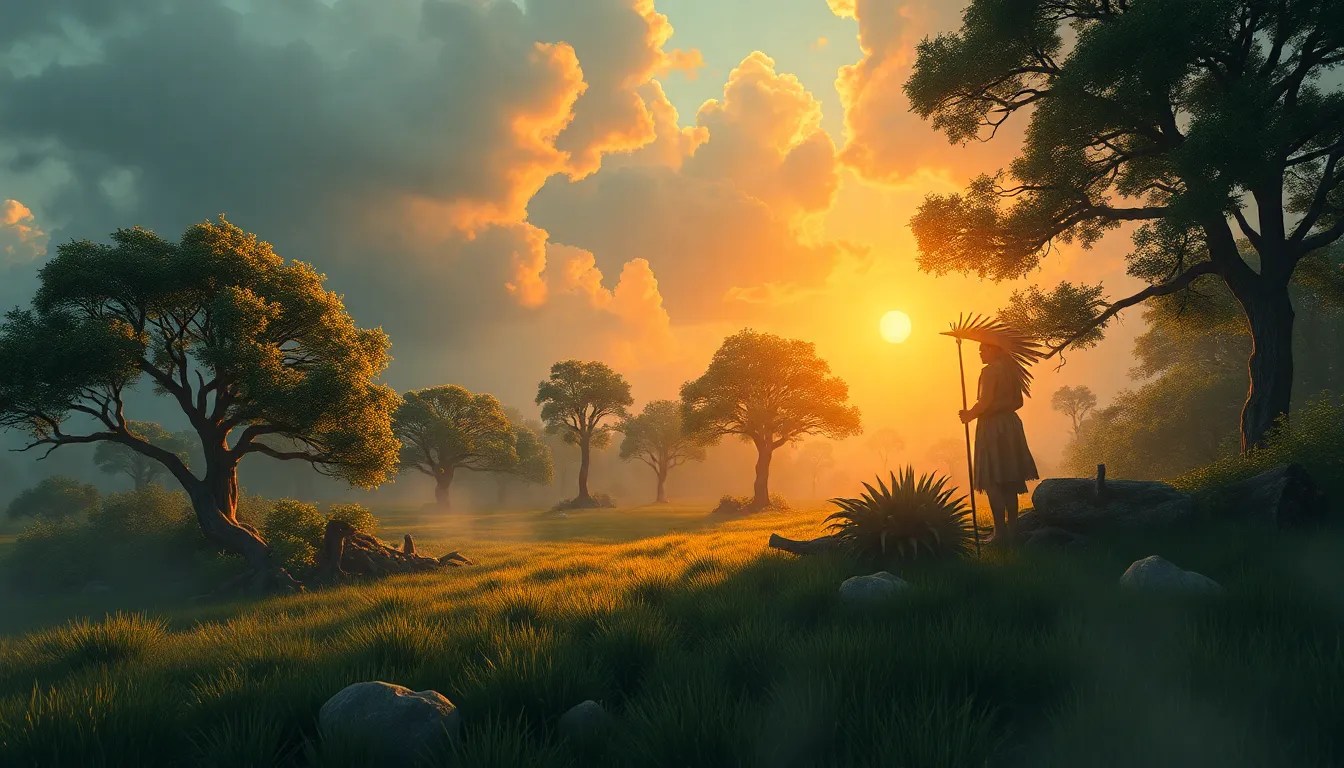The Choctaw and Their Connection to the Earth: A Spiritual Legacy
I. Introduction
The Choctaw Nation, one of the largest Native American tribes in the United States, has a rich cultural and spiritual heritage deeply connected to the Earth. Their beliefs and practices highlight the importance of nature as a living entity, deserving of respect and reverence. This article explores the spiritual legacy of the Choctaw people, focusing on their relationship with the Earth, core beliefs in mythology, and contemporary challenges they face.
II. Historical Context of the Choctaw People
The Choctaw people have a long and storied history that dates back thousands of years. Originally inhabiting the southeastern United States, their migration patterns and settlements were influenced by the natural landscape.
- Early history and migration patterns: The Choctaw were primarily located in what is now Mississippi, Alabama, and Louisiana. Their early history is marked by a deep connection to the land, which provided for their needs.
- Traditional lifestyle and relationship with the land: The Choctaw practiced agriculture, hunting, and gathering, living in harmony with nature. They cultivated crops such as corn, beans, and squash, often referred to as the “Three Sisters.”
- Impact of colonization and displacement: The arrival of European settlers brought significant changes, leading to the forced removal of the Choctaw from their ancestral lands during the 19th century, notably through the Trail of Tears.
III. Core Beliefs in Choctaw Mythology
Choctaw mythology is rich with stories that illustrate their beliefs about creation and the natural world. These narratives reflect their deep spiritual connections to the Earth.
- Creation stories and the role of the Earth: The Choctaw believe that the Earth was created by spiritual beings, and these stories emphasize the sacredness of the land and all living things.
- Key deities and their connection to nature: Important figures in Choctaw mythology include Nanih Waiya, the creator, and Hushpuckena, the spirit of the Earth, both embodying elements of nature and the land.
- Symbolism of animals and plants in Choctaw culture: Animals such as the deer and the bear hold significant spiritual meaning, while plants like the sacred cedar are used in rituals and ceremonies.
IV. The Concept of Land as Sacred
For the Choctaw, the land is not merely a resource but a sacred entity that requires respect and protection. This belief is reflected in their cultural practices and spiritual rituals.
- Spiritual significance of natural landscapes: Mountains, rivers, and forests are seen as sacred spaces where the spiritual and physical worlds intersect.
- Rituals and practices honoring the Earth: The Choctaw perform various ceremonies that celebrate the changing seasons, harvests, and the life cycles of plants and animals.
- The role of sacred sites in Choctaw tradition: Certain locations, such as burial sites and ancient mounds, serve as important cultural landmarks that connect the Choctaw to their ancestors and history.
V. The Interconnectedness of Life
The Choctaw worldview emphasizes the interconnectedness of all living things, fostering a sense of responsibility towards nature.
- Understanding the balance between humans and nature: The Choctaw believe that humans are caretakers of the Earth and must live in balance with the environment.
- Lessons from Choctaw stories about stewardship: Tales of wise elders and animals teach young Choctaw about the importance of respecting the land and its resources.
- The impact of this worldview on environmental practices: Traditional ecological knowledge informs their sustainable practices, including crop rotation and wildlife management.
VI. Contemporary Challenges and Resilience
Despite their rich heritage, the Choctaw face numerous challenges in the modern world, largely due to historical injustices and ongoing threats to their land.
- Modern threats to Choctaw lands and resources: Industrialization, pollution, and climate change pose significant risks to the natural environment that the Choctaw depend on.
- Efforts to preserve cultural heritage and land rights: Activism and legal battles are ongoing to protect their land and assert their rights as a sovereign nation.
- Revitalization of traditional practices and beliefs: There is a growing movement among the Choctaw to revive traditional agricultural practices, language, and cultural ceremonies.
VII. The Role of Education and Cultural Transmission
Education plays a crucial role in the preservation of Choctaw culture and the transmission of knowledge to future generations.
- Importance of storytelling and oral traditions: Oral storytelling is a vital means of passing down history, values, and beliefs among the Choctaw.
- Programs and initiatives for teaching Choctaw youth: Schools and community programs focus on teaching the Choctaw language, culture, and history.
- Collaboration with non-Native communities for awareness: The Choctaw engage in partnerships with educational institutions and organizations to promote understanding and respect for Indigenous cultures.
VIII. Conclusion
The Choctaw Nation’s enduring legacy is a testament to their resilience and deep spiritual connection to the Earth. Their beliefs and practices remind us of the importance of respecting and learning from Indigenous perspectives. As we face contemporary environmental challenges, we are called to action to embrace stewardship and cultural preservation, ensuring that the rich heritage of the Choctaw and other Indigenous peoples continues to thrive for generations to come.



